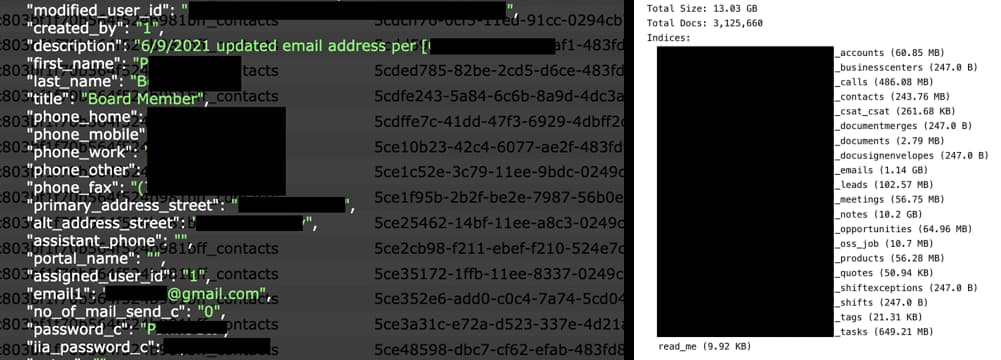Uncover the risks posed by a data leak exposing over 3 million vulnerable records, internal communications, client details, and plaintext passwords – Explore proactive cybersecurity measures to mitigate threats.
Cybersecurity researcher Jeremiah Fowler made a significant discovery: a 13 GB misconfigured cloud database resembling a Customer Relationship Management (CRM) system, reportedly linked to CU Solutions Group, a Michigan-based credit union service provider.
The data leak’s severity was made worse by two critical factors: firstly, it was left publicly accessible without any security authentication or password protection. Secondly, the server contained over 3 million records (3,125,660 in total), including a collection of sensitive information. This included over 1 million email conversations, internal notes, clients’ full names, physical addresses, details about thousands of credit unions across the United States, email addresses, and plaintext passwords.
In his blog post for Website Planet, Fowler detailed how he contacted CU Solutions Group for responsible disclosure, leading to the company securing the server on the same day. However, representatives of the company attributed the misconfiguration to a possible mismanagement by a third-party vendor, leaving the actual responsibility unclear.
Nevertheless, despite the database being secured, uncertainty remains regarding whether malicious threat actors, aside from Fowler (the good guy), had accessed it before the researcher’s report. If they had, it could lead to the breach being circulated on cybercrime forums. This, in turn, could result in additional cybersecurity threats, including ransomware attacks, spam, identity theft, account takeover due to plaintext passwords, phishing attacks, and more.
If you are registered with CU Solutions Group, it is a good time to contact the company and inquire about the data leak. Additionally, enable 2FA on your account and keep an eye on any suspicious activity on it.
Database misconfiguration is a top cybersecurity threat. It allows threat actors to access a trove of data hardly without looking and exploiting for vulnerabilities or breaching a system. Anyone with knowledge of how to surf the Shodan search engine can access these databases.
Here’s what companies can do to secure a misconfigured database and prevent exposure:
1. Identify and Fix Misconfigurations:
- Vulnerability Scanning: Regularly scan your database for known vulnerabilities and misconfigurations using dedicated tools.
- Manual Reviews: Conduct periodic manual reviews of database configurations against security best practices.
- Focus on Privileges: Analyze and adjust user privileges to grant only the minimum access required for each role.
2. Implement Strong Authentication and Access Control:
- Multi-factor Authentication (MFA): Mandate MFA for all database users, adding an extra layer of security beyond passwords.
- Principle of Least Privilege: Implement the principle of least privilege, ensuring users only have access to the data they need.
- Monitor User Activity: Monitor user activity within the database for suspicious behaviour or unauthorized access attempts.
3. Encrypt Sensitive Data:
- Data at Rest: Encrypt sensitive data stored within the database to protect it from unauthorized access even if breached.
- Data in Transit: Encrypt data during transmission between applications and the database to prevent interception.
4. Implement Backups and Disaster Recovery:
- Regular Backups: Regularly back up your database to a secure location for recovery in case of data loss or corruption.
- Disaster Recovery Plan: Develop and test a disaster recovery plan to ensure quick and efficient recovery from cyberattacks or other incidents.
5. Stay Updated and Informed:
- Patch Management: Apply security patches and updates to your database software promptly to address known vulnerabilities.
- Security Awareness Training: Educate your staff on database security best practices and potential threats.
- Stay Informed: Follow cybersecurity news and advisories to stay updated on emerging threats and mitigation strategies.

